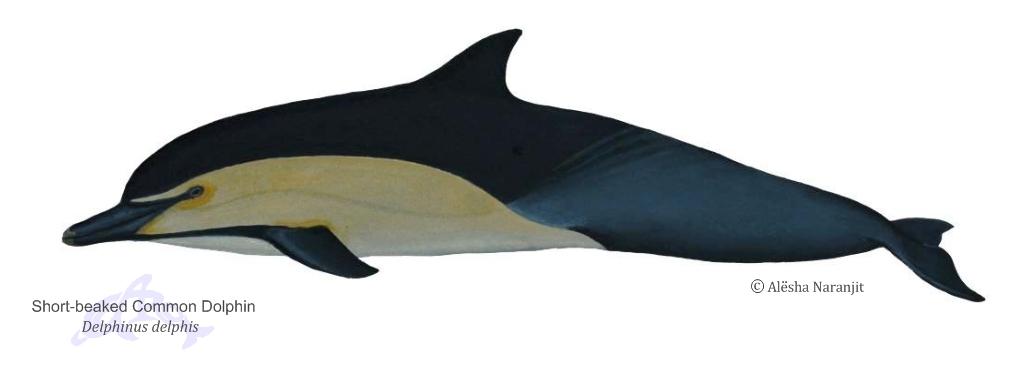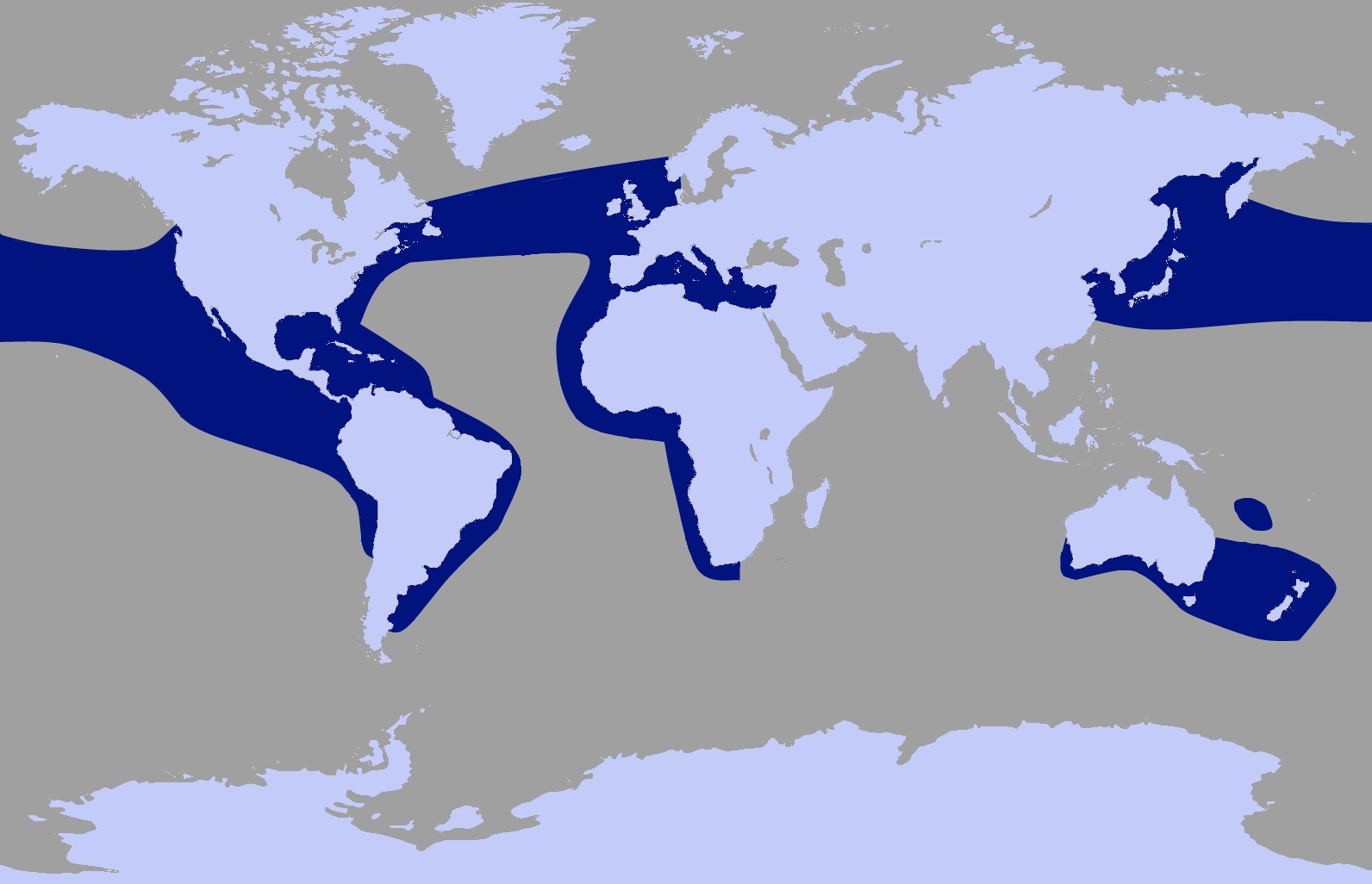Short-beaked Common Dolphin
Delphinus delphis

Classification Other Names: Atlantic Dolphin, Pacific Dolphin, Saddle-backed Dolphin, Short-beaked Saddleback Dolphin Suborder: Odontoceti
| Description Unlike the Long-beaked Common Dolphin which is very similar, the Short-beaked Common Dolphin has a shorter (but still moderately long) beak, more rounded melon and although it does have dark eye-flipper stipes it does not have an eye-vent stripe. They are very gregarious and vocal, often porpoising, breaching and bowriding. They can be seen in mixed-species groups, often associating with Long-beaked Common Dolphins in some areas.
|
Short-beaked Common Dolphin Ecology Range: Tropical and cool temparate waters of the Atlantic and Pacific Oceans Usual Habitat: In both shallow and deep waters, on-shore and off-shore. Usual group size: 10 - 30 individuals. Can aggregate in the 1000s. Main Diet: Small fish, squid and krill Local population: Unknown
| Global range of the Short-beaked Common Dolphin
Short-beaked Common Dolphins are likely to be found in the dark blue areas |
Conservation Information
Protection and Conservation Status |
Reports of False Killer Whale in Trinidad and Tobago
There are currently no reports of this species in Trinidad and Tobago.
References
The above information was obtained from the following sources:
- A Princeton Field Guide: Whales Dolphins and Other Marine Mammals of the World by Hadoram Shirihai and Brett Jarrett (2006)
- Smithsonian Handbooks: Whales Dolphins and Porpoises by Mark Carwardine and illustrated by Martin Camm (2002)
- The Whale and Dolphin Conservation Society's Species Guide at http://www2.wdcs.org/species/index.php
- The IUCN Redlist at http://www.iucnredlist.org
- The SPAW protocol Annexes with links available at http://www.car-spaw-rac.org/?Annexes-of-the-SPAW-Protocol,83
Acknowledgements
We would like to thank the following people for the use of the art work and photographs:
- Alësha Naranjit (Illustration of Short-beaked Common Dolphin)
